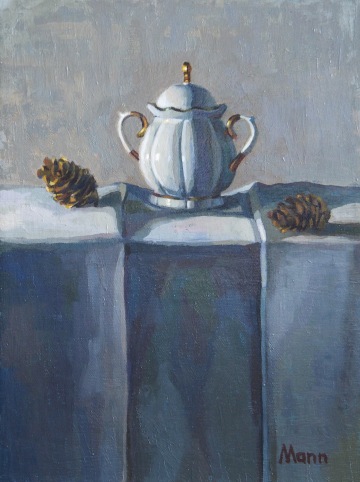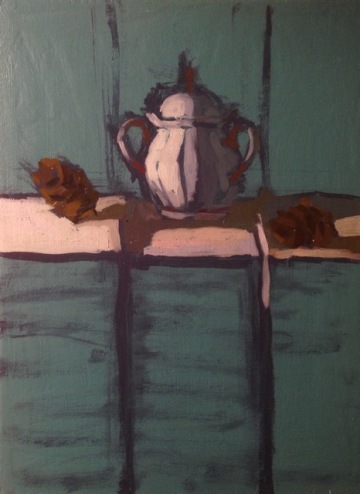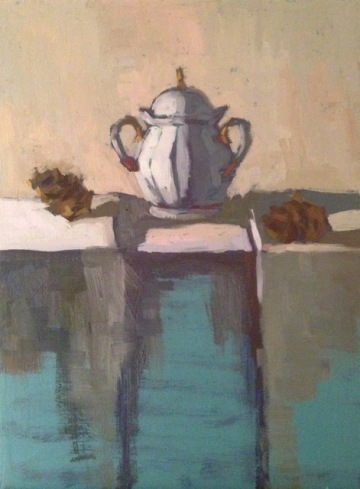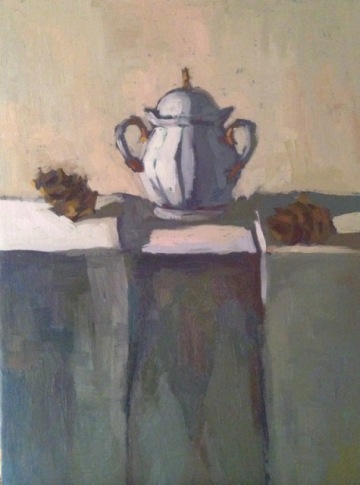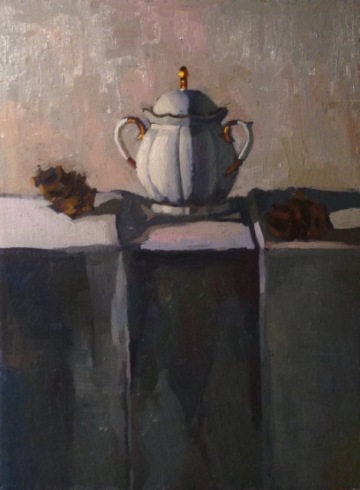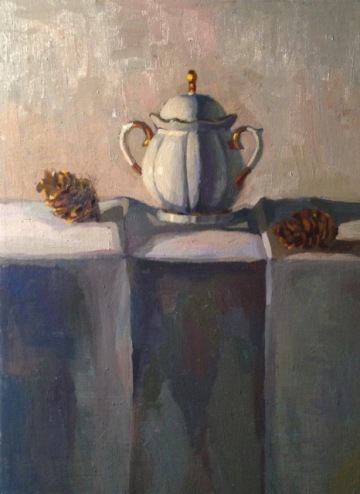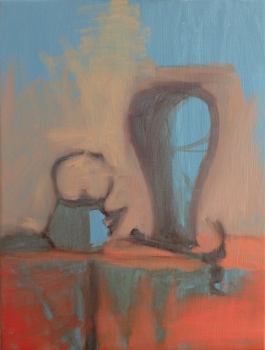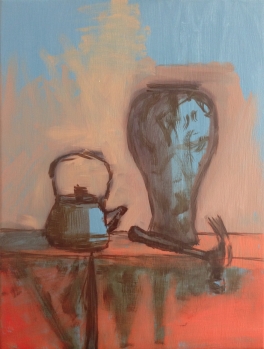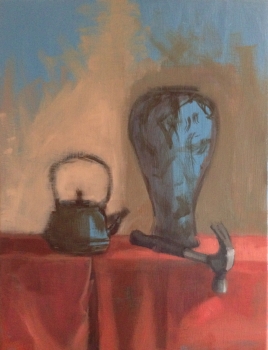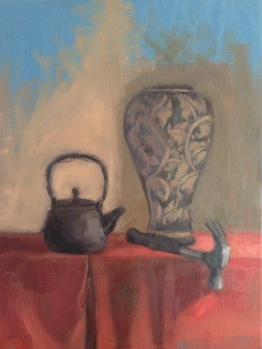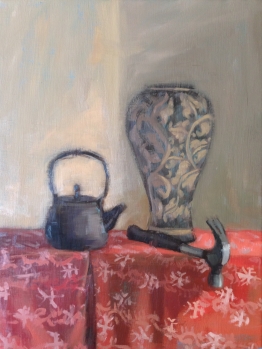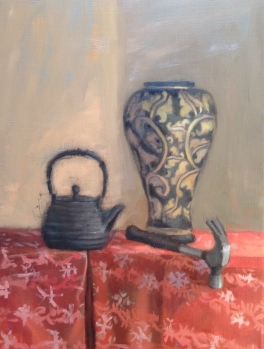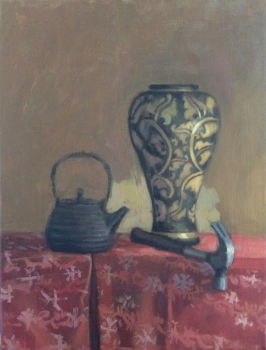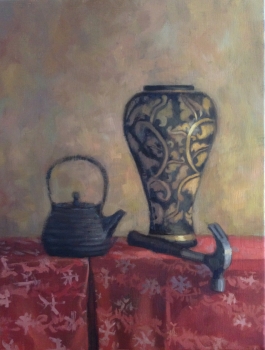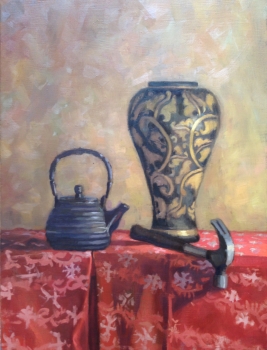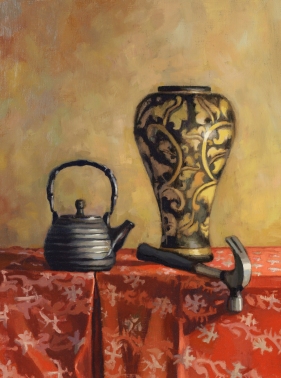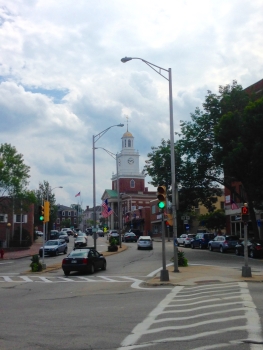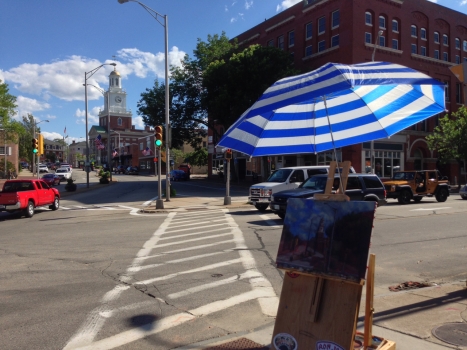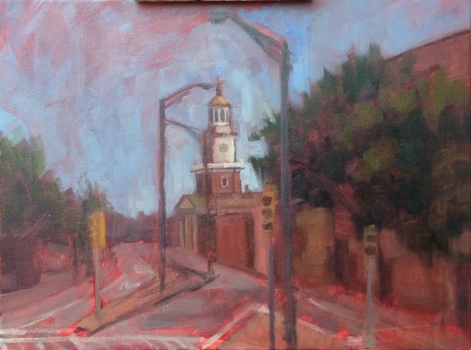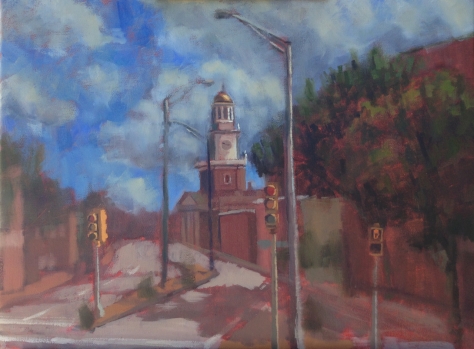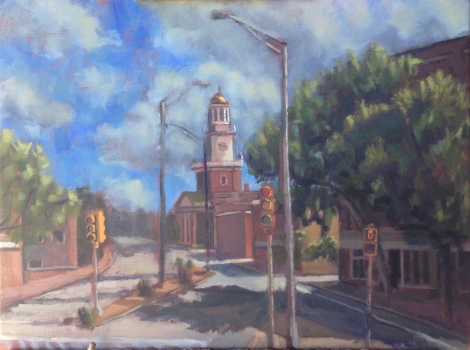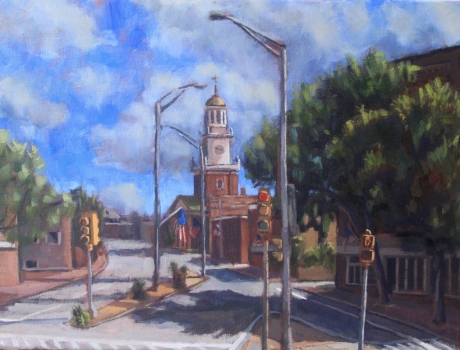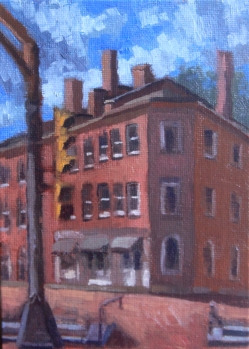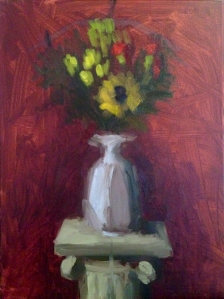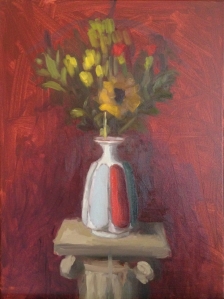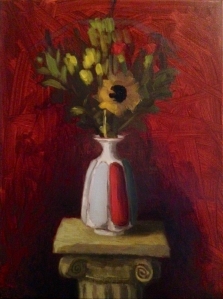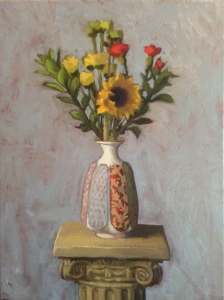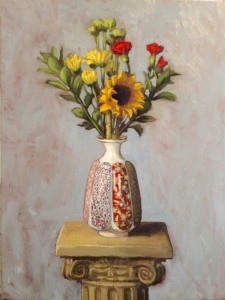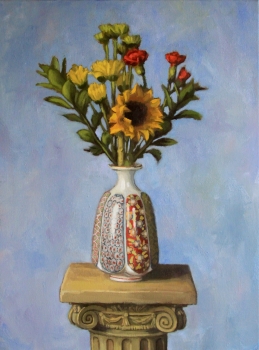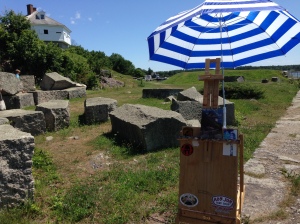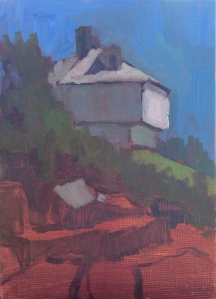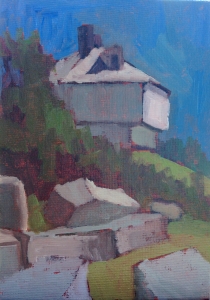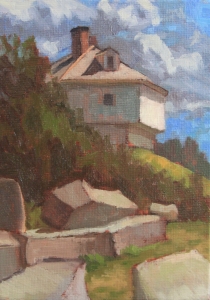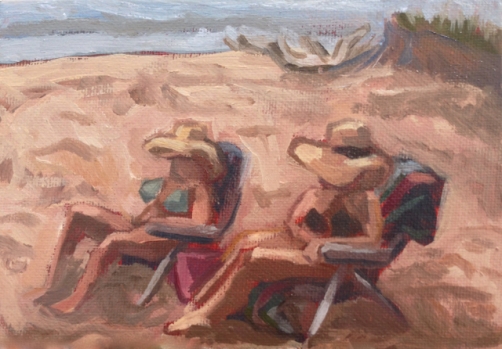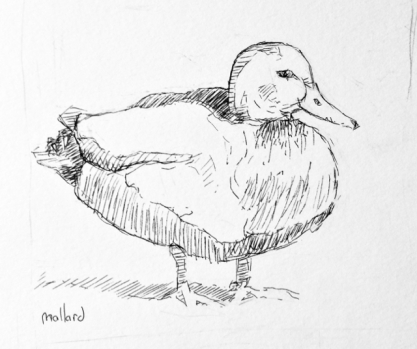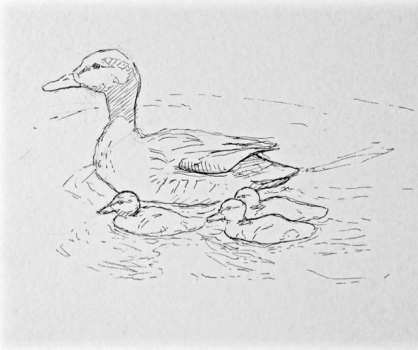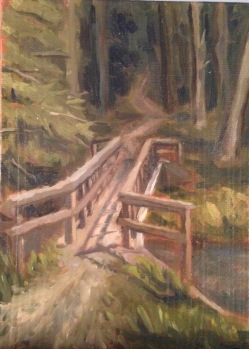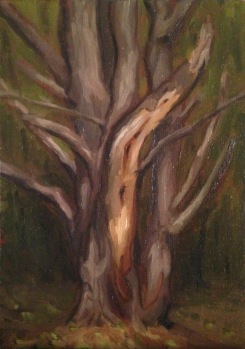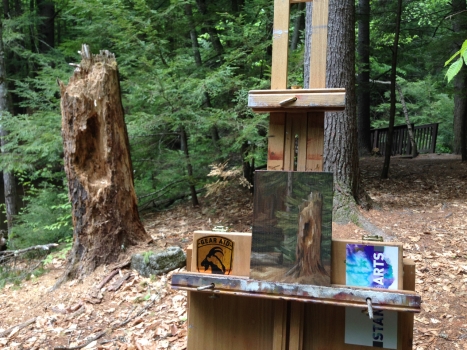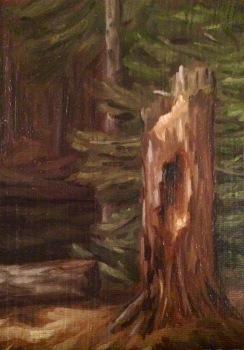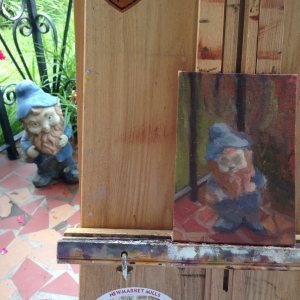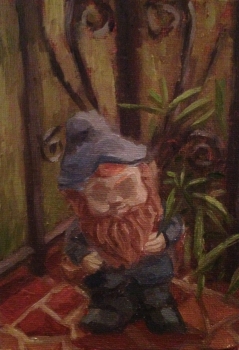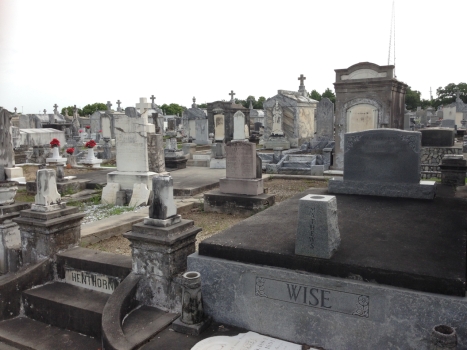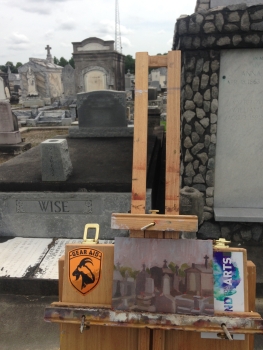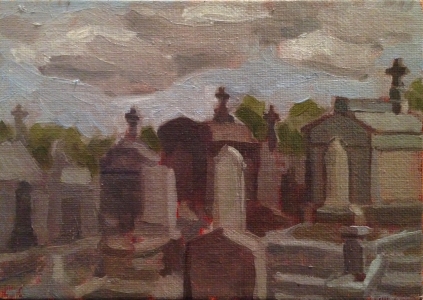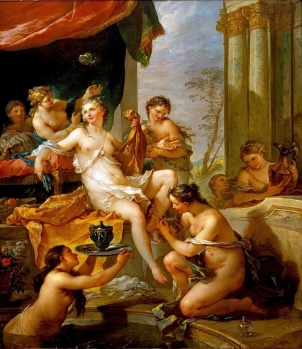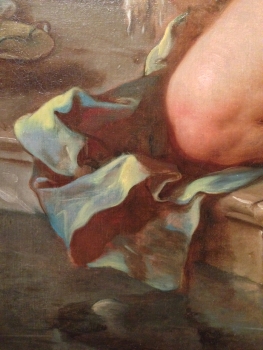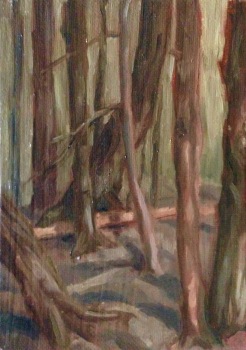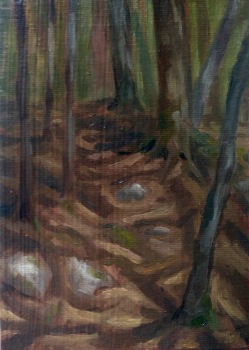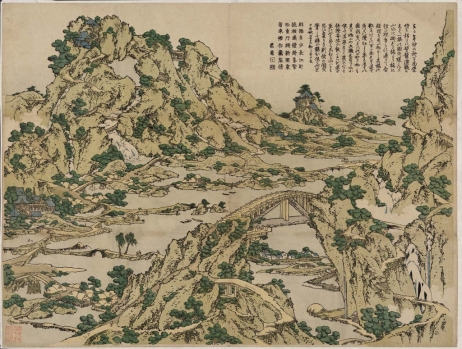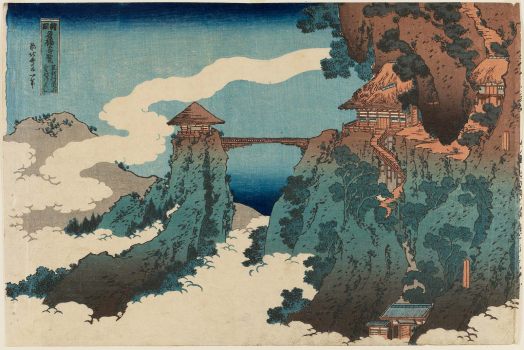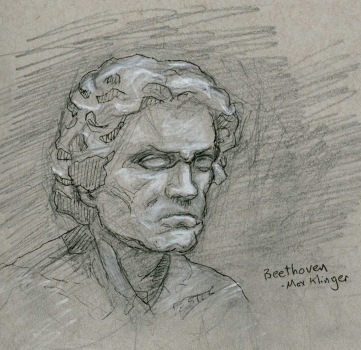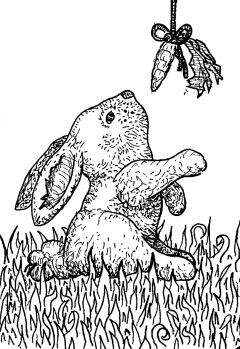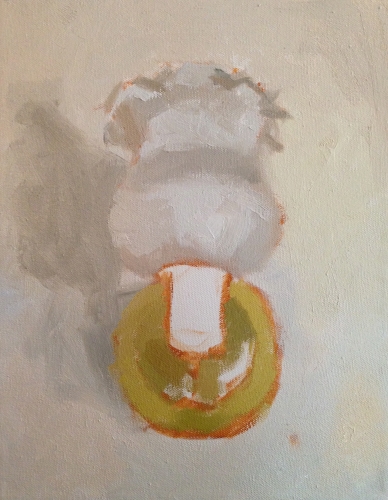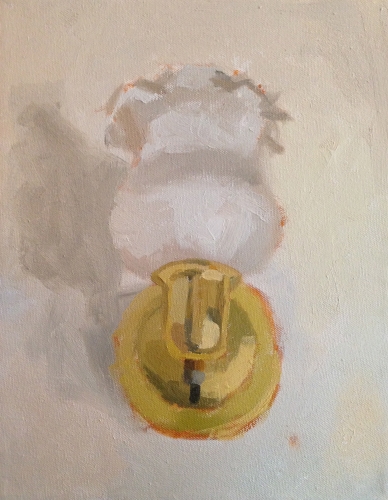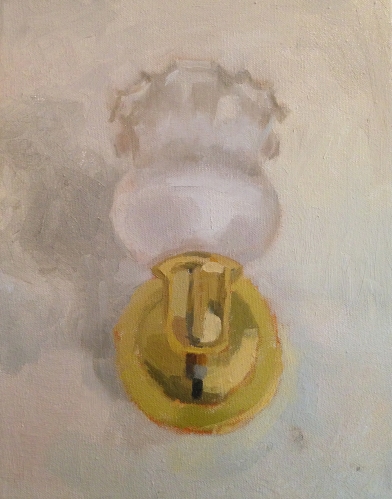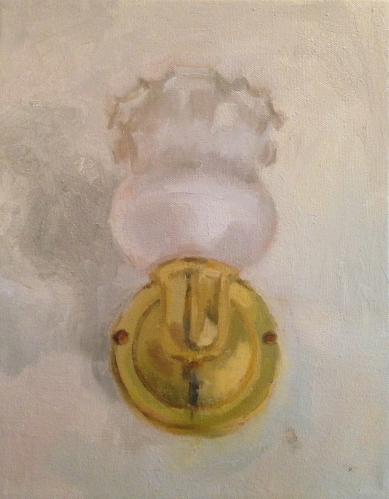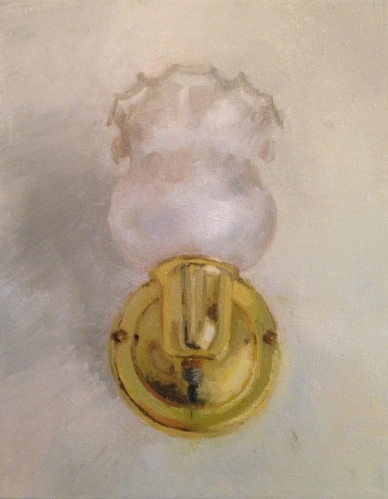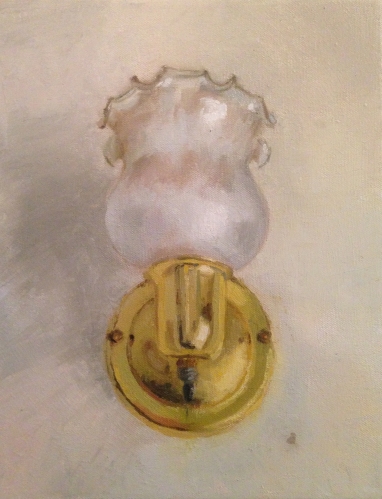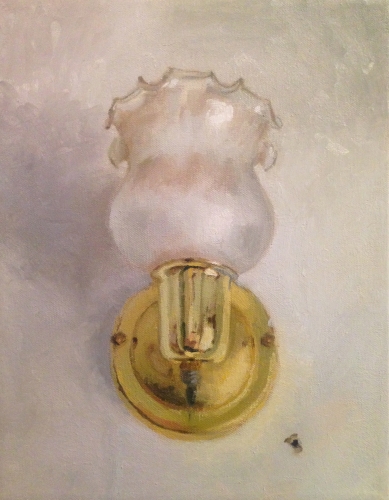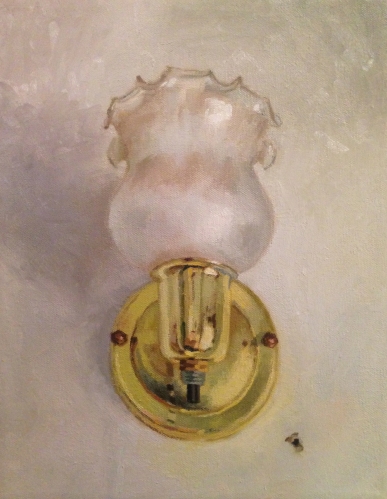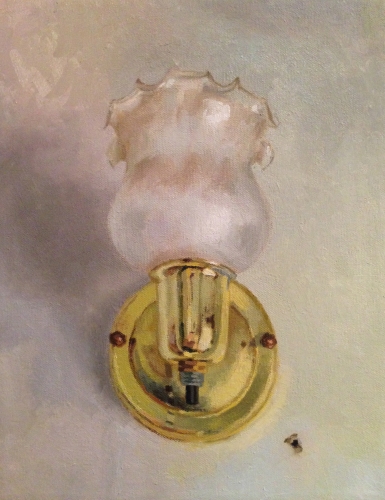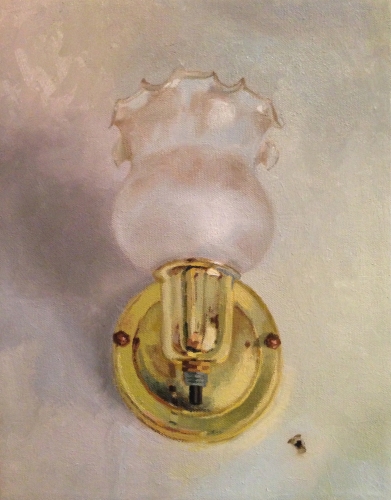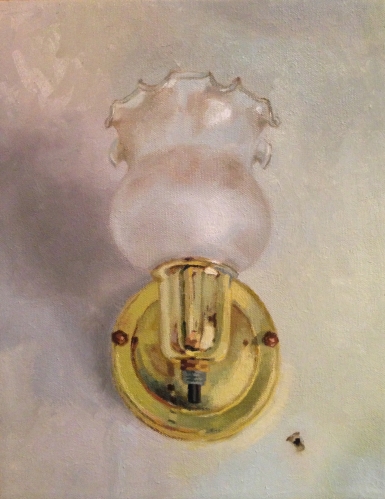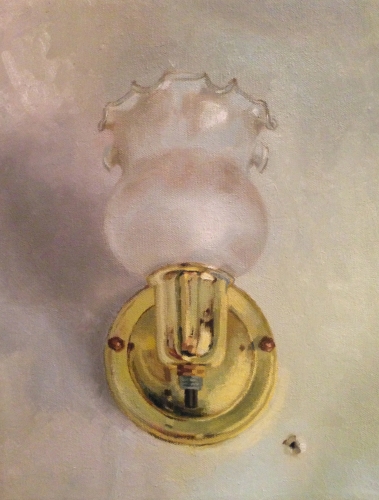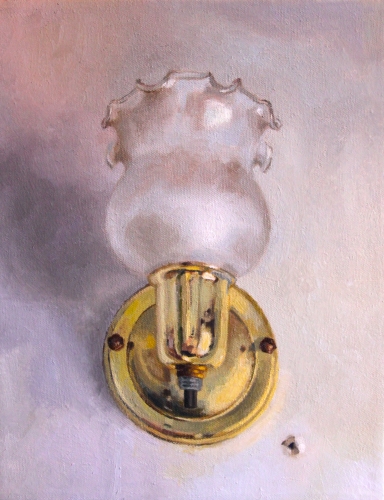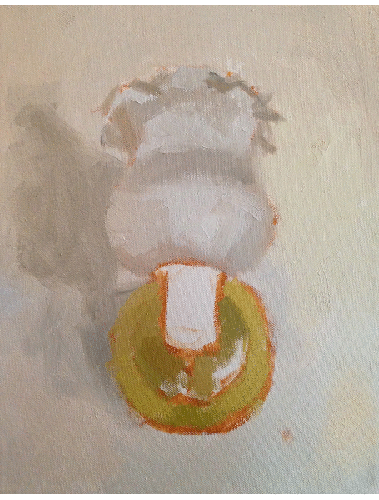Ten or so months ago I was crouched beside the magazine racks at the Barnes and Noble when I plucked out Plein Air Magazine. I thumbed through the entire issue and read most of the articles until my bent knees and crunched toes told me it was time to stand up. Though I’d read most of it, I purchased the issue for its wonderful artwork. I figured they would make great references.
In Italy I painted en plein air almost every day, sometimes turning out two or three paintings. It was great fun and the ridiculous heat did little to staunch my enthusiasm. It’s possible I was energized simply because I was in a different country, for when I came back stateside I did little plein air painting. There was not motivation or incentive. On occasion I’d wander outside with my oils, but what little plein air work I did mostly came in the form of watercolor, pencil, and ink sketches.
My lacking personal experience with the harmony of the arts and the outdoors did not prevent me from marveling at the artists who call plein air paintings office work. I’ve spent a lot of time analyzing the painters I follow. I’ve watched video after video on Youtube of artists showing their processes. When I finally saw that the New Hampshire Art Association was holding a plein air competition, I signed right up. (Side Note: I commonly refer to the New Hampshire Art Association as NHAA, but it turns out that’s actually the New Hampshire Alcoholics Anonymous. I’m trying to avoid the abbreviation now so people don’t think I paint alcoholics or I’m an alcoholic painter.)
The seacoast is a haven for plein air painters and I knew it would be a tough competition. Still, I have a good amount of self-confidence and believe I’ve made substantial progress this last year. Though I have not been able to dedicate as much time to producing art as I’d like, I have made several museum trips and studied paintings intently. In the past I would just paint. Now I try to make decisions in my work.
I got to the New Hampshire Art Association’s State Street gallery a little past 7:20 am on Friday. Inside I was greeted by Lennie Mullaney and she signed me off the registration list. I was officially participating. We talked for a short while and I found out that I had seen her work several years before. She had been an MFA student at UNH while I was getting my undergrad. Her work had been displayed at the end of the year show. She has some absolutely lovely recent artwork focusing on bridges, houses, and ocean scenes around Portsmouth.
From the gallery I did a little fast walk sprint to Prescott Park to claim my spot. A couple days before I had scoped out the city with a camera, trying to decide on locations and subject matter. During my exploration I stumbled upon an almost surreal view of the Prescott Park gardens. It was as though the painting was already created and all I needed to do was copy it down. I had to paint it first.
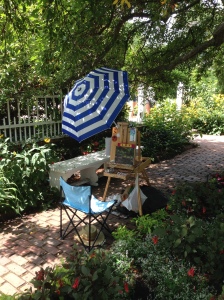
The day before the start of the competition I had purchased a $5 umbrella from Five Below to keep the sun off my canvas. Though my setup was by far the least expensive and the most jerry-rigged of all the contestants’, it worked and that is all I needed.
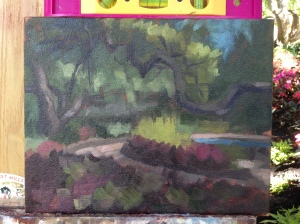
For my last few paintings I have used burnt umber or burnt sienna toned canvases. There’s something intimidating about a completely white canvas and the tone diminishes that aspect while also contributing a base dark to work from. Additionally, with plein air painting the reds of the tone provide a nice complement to the greens of nature. Here you can see I also brought a level to avoid accidental tilts or skewed perspective.
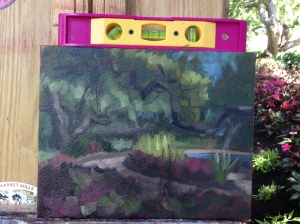
A couple hours into the painting my parents showed up with some surprise drinks and snacks. They were on their way to Nova Scotia and wanted to say hello. For the next three days I chomped on the pretzel thins they brought.
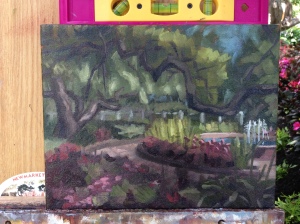
While I worked on my painting the gardeners worked around me, pulling weeds and laying down loam. They’d told me early on that I may get wet when they turn the sprinklers on, but thankfully I was done before that happened. I may have been motivated to work fast because of that potential threat.
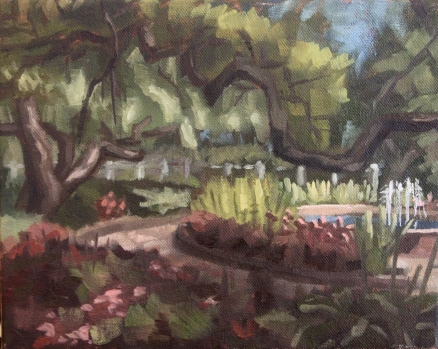
Gardens at Prescott Park 8″x10″
Towards the end of the painting other artists began showing up and I directed a few towards the gallery. I had an older couple walk by and tell me that they’d seen quite a few of the other artists and that I was the youngest one, and the only male so far. Which wasn’t surprising. That’s been the reality of all of the classes and programs I’ve participated in. Only one other male student went on the Italy trip and in most of my undergrad classes I was one of three guys. Even in my English classes the proportions were female heavy. It’s great that love for the humanities and the arts is still very much alive, but it is kind of sad that I don’t have many same-age male artist friends to share experiences with.
I was satisfied with my first painting and ready to move on to the next one. I packed up and hiked out of the shade and into the heat. A couple blocks away I found another spot and plopped on down.
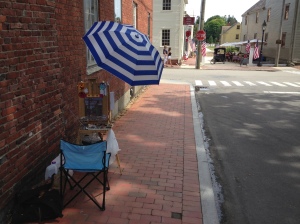
It was around noon at that point, with the sun directly overhead. It’s hard to paint at that time due to the lack of long, deep shadows. But I knew which way the sun was setting and figured I could get the painting started and wait for the shadows to come to me. So I sat in the sun and was shortly back in the shade as the sun creeped down to the west.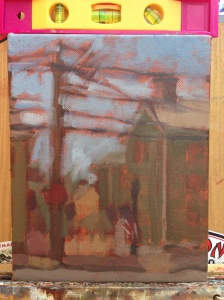
Telephone poles have a paradoxical beauty that fluctuates between the complex and the simple. There’s not much to them besides a pole, a transformer box or two, and wires, but the sheer number of wires can make them appear complicated. It’s this beauty that has me mesmerized. In the fall I did a two day paint of a cluster of telephone poles that really got me hooked. Since then I’ve found myself staring up and thinking of how to include them in more paintings. The competition was a perfect opportunity to see what I could do.
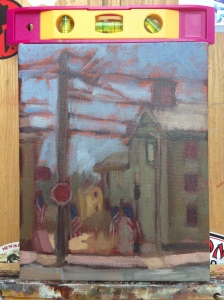
The view I chose for my second painting looked down into the heart of Strawberry Banke. The buildings I painted were hundreds of years old. Did the people who originally built them ever think that someone else would find their homes picturesque? I certainly love old colonials and I wonder if our current homes will ever be seen with as much interest and nostalgia.
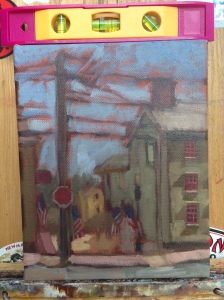
By the time I’d blocked in the painting the sun had lowered enough that some interesting shadows were appearing. I quickly threw them in, knowing that they’d soon change.
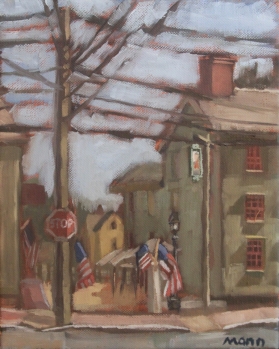
Nest 8″x10″
Four hours in I was ready to call it done. My eyes had spent enough time on one subject and the light was changing to a point that I couldn’t continue. I later decided to call this painting Nest due to the tangle of wires that dominate the upper third. It was a fun view to paint and the American flags brought me back to my days working on my Bennington Flag painting Hammer to Fall.
All wrapped up I headed into the center of town to meet up with my girlfriend and paint her portrait at Market Square. Since the sun was disappearing and I only had her as a model for two hours, I hurriedly painted her in and saved the background for the next day.
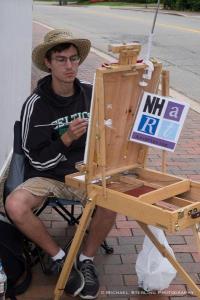
Day two began with me waking up to torrential rain at 5:30 and deciding to hold off on painting for a bit. It lessened up in a couple hours and I drove through the showers into Portsmouth around 8:30. Amazingly it cleared up and the weather held off for the rest of the day. I can deal with overcast. I don’t exactly have an umbrella large enough to protect all my stuff from hard rain.
A short distance from my car I looked up at the telephone poles, saw the church steeple in the background, and found my spot. I’d told myself I wouldn’t paint the steeple because it was too generic. Everyone has photographed or painted it. But I felt the lines and poles added something new to it. Partway through the morning I met New Hampshire Art Association photographer Michael Sterling, who took the above photograph of me for the association’s Facebook page.
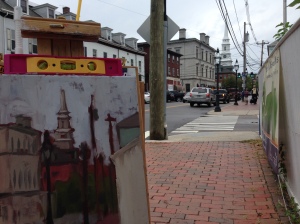
As the days and hours went by I took fewer progress pictures. I’d always remember to do it, then see something that needs to be fixed in my painting, postpone taking a photo, paint away, and then forget to take the photo. It was an endless cycle.
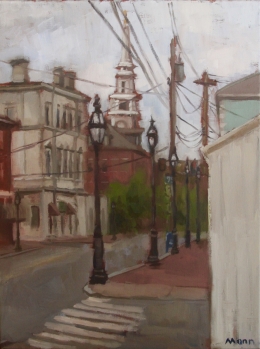
Overcast 12″x16″
This piece was my largest of the weekend by far at 12″x16″. It took me until four in the afternoon. I spent a solid chunk of time working out the composition, eventually going with a triangular approach with the tip of the steeple being the top of the triangle. There was a lot more I could have done, but like I mentioned earlier, I tend to tire of a subject if I spend too long on it. If the contest was a week long I would have let it sit for a day or two and then returned to it.
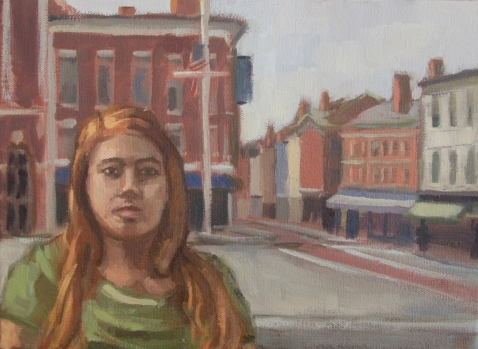
Portrait of Sarah at Market Square 9″x12″
With a few hours left of daylight I returned to Market Square and worked on the portrait of my girlfriend. It was a bit frustrating because I could not place myself in the original spot. Other people were sitting there. I was also battling a sore shoulder from holding a palette all day. I painted quickly and went home to a hot shower and some quesadillas.
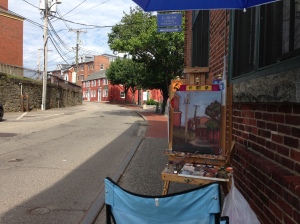 Day three was crunch time. I only had until noon to work. Three pieces needed to be submitted at that time for jurying. I got into the city at seven, hiked a short ways, and found a spot without fuss. Despite all the preplanning and city exploration I did before the contest, I never used any of my pre-picked spots besides the first one in Prescott Park. I just walked and was fortunate to find subject matter quickly. It helps that the city is gorgeous.
Day three was crunch time. I only had until noon to work. Three pieces needed to be submitted at that time for jurying. I got into the city at seven, hiked a short ways, and found a spot without fuss. Despite all the preplanning and city exploration I did before the contest, I never used any of my pre-picked spots besides the first one in Prescott Park. I just walked and was fortunate to find subject matter quickly. It helps that the city is gorgeous.
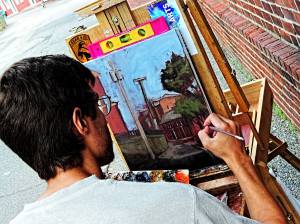 Two-thirds of the way through the morning I met another New Hampshire Art Association photographer: Bill Moore. We talked for a little while, he snapped the above picture, and him and his mustaches and smile went on their way.
Two-thirds of the way through the morning I met another New Hampshire Art Association photographer: Bill Moore. We talked for a little while, he snapped the above picture, and him and his mustaches and smile went on their way.
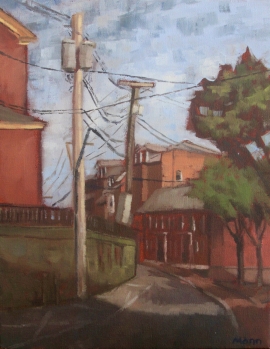
To the Side 11″x14″
With excitement and satisfaction I finished my final painting of the competition at eleven. I met my girlfriend at my car and she helped me carry my paintings to the gallery. I selected the three pieces with telephone poles: Nest, Overcast, and To the Side. I felt as though they would exhibit well together.
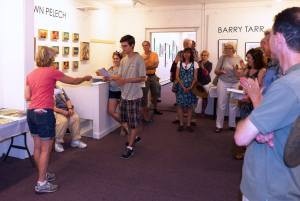
The competition was juried by Carol Aronson-Shore, a local artist who has done a lot of paintings of Portsmouth and Strawberry Banke. I did not get to meet her as it seemed she was not at the awards ceremony afterwards. Which I understand. No one wants to be confronted and questioned about their decisions and berated for making the wrong ones.
The final showing of all the pieces took place at three and I was happy to find that I had received an Honorable Mention for To the Side. There was certainly a part of me that was disappointed though. I had almost been expecting to place in the top three. I’ve always had a lot of self-confidence in my work. In undergrad classes I’d go around the room and look at everyone’s work and mentally try to calculate if I was one of the best students. I usually thought I was. That’s not to say I was cocky though. Simply, I am always proud of my work. This outlook has been beneficial and encouraged me to continue on with my art. I look back at my old paintings and drawings now and I question what I was thinking. Did I really think that was good art? But the self-confidence in the moment kept me going and so I continued to improve.
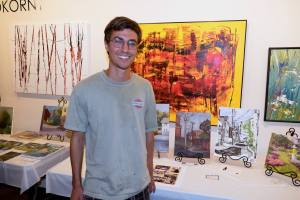 After the show was over I took a hard look at my paintings. I can see where I need to improve compositionally and more than that, I can see where I need to improve with color. When I first started painting I put varying color in every part of my paintings. It was very Impressionistic. Since then I have gravitated to a blockier, single color style. However, I need to find the happy median. There needs to be more color and variety in my work. Part of the problem is my earth tones palette and the fact that those pigments dry dark. I will have to take more time with my paintings and realize that the moment I feel done is the moment that real painting begins.
After the show was over I took a hard look at my paintings. I can see where I need to improve compositionally and more than that, I can see where I need to improve with color. When I first started painting I put varying color in every part of my paintings. It was very Impressionistic. Since then I have gravitated to a blockier, single color style. However, I need to find the happy median. There needs to be more color and variety in my work. Part of the problem is my earth tones palette and the fact that those pigments dry dark. I will have to take more time with my paintings and realize that the moment I feel done is the moment that real painting begins.
As a final note, all the paintings here are up for sale. I will eventually have a shop set up for prints and originals, but for now here are the prices:
Gardens at Prescott Park – $150
Nest – $250
Overcast – $400
Portrait of Sarah at Market Square – $200
To the Side – $300
If you would like to purchase one of the pieces, please email me at thewritingmann@gmail.com.
